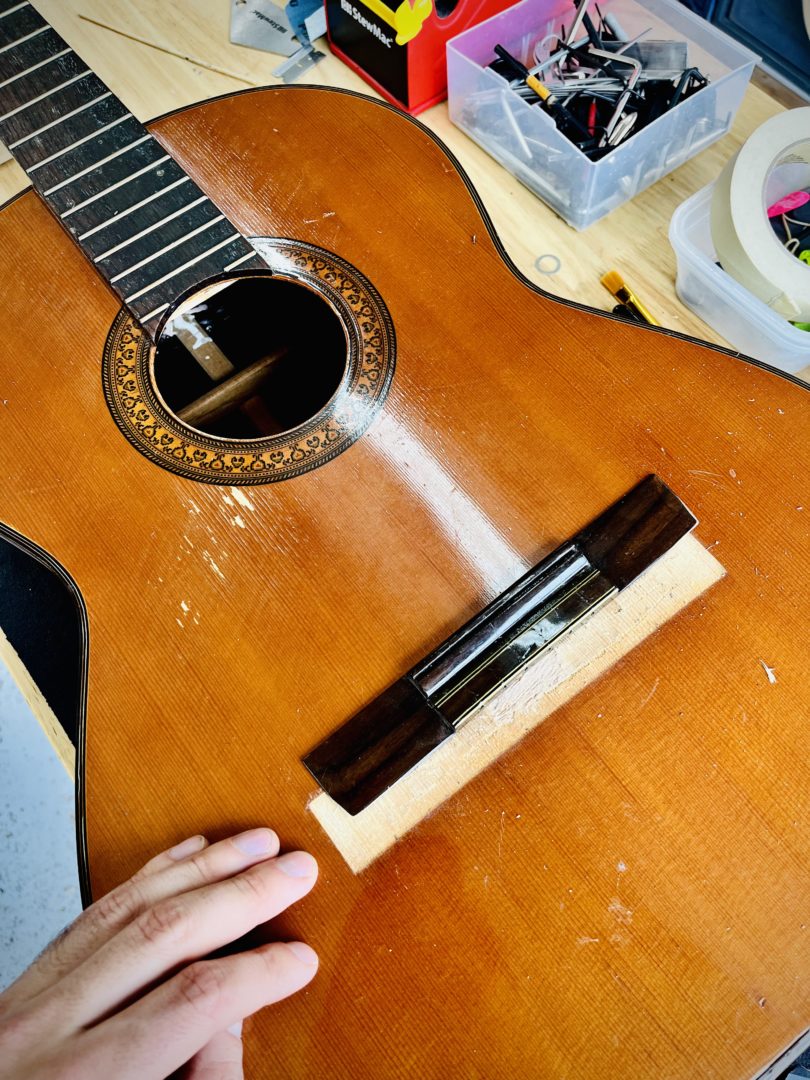
Checklist for Buying Used Instruments

1) Instrument Inspection
Take the time to carefully observe the instrument as a whole. Look for cracks, deformations, and examine the condition of the varnish. Ask about any previous repairs. If possible, use a dentist’s mirror to inspect the interior of the instrument, as it can reveal important details. Also, make sure to know the storage conditions of the instrument, such as whether it was kept in a damp cellar or other humid places.
2) Bridge Condition
This is a crucial point. Examine the back of the bridge to identify any potential issues. If you notice that certain parts are detaching, try sliding a sheet of paper to determine where the contact is lost.

While regluing the bridge is relatively straightforward, it’s essential to uncover the underlying cause: is it a crack in the bracing, a too-thin top, or poor gluing? Learn more here
3) Neck Verification
Inspect the neck from the headstock to detect any twisting. The impact of this issue will depend on your intended use. Whenever possible, try the instrument! While we all prefer a perfectly straight neck, some musicians may tolerate slight deformations. However, exercise caution, as this could impact future resale value.
4) Neck Projection
If the strings are too high and the nut is small or even nonexistent, be cautious! The neck might need to be adjusted to correct the angle. This procedure is often costly.
5) Tapping the Body
Gently tap the body to detect any detached or cracked braces. If you hear an unusual vibration, it could indicate fragile braces. Use a mirror to inspect if you hear anything. A “popping” sound might reveal a past impact, making the inspection even more crucial.
6) Truss-Rod Test
Verify the proper functioning of the truss-rod by adjusting it and comparing measurements before and after. This step requires some tools, so make sure to gather information before proceeding with the instrument inspection. For more information on this subject, refer to this article.
This article will be regularly updated to remain relevant. See you soon!


